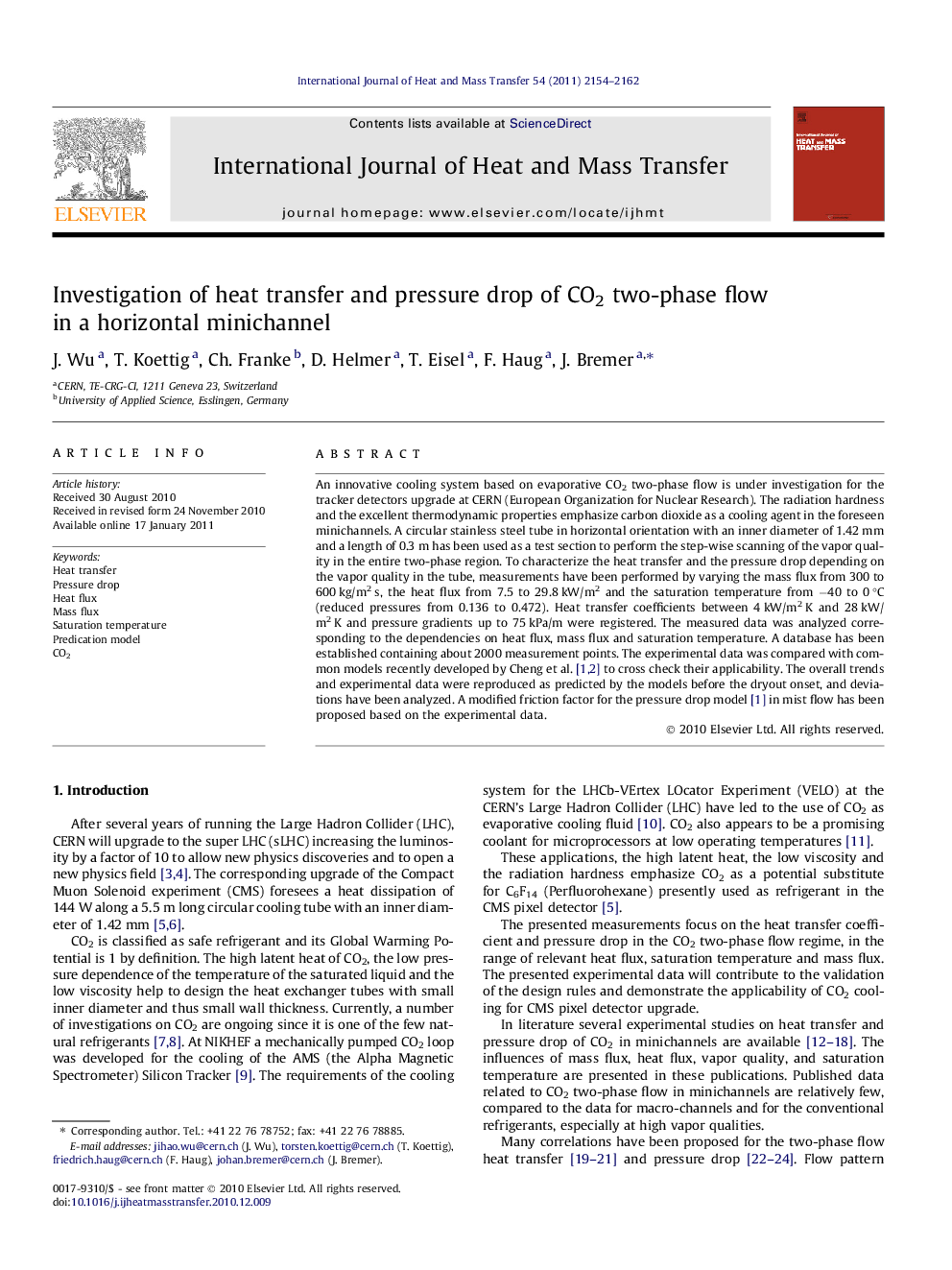| Article ID | Journal | Published Year | Pages | File Type |
|---|---|---|---|---|
| 659820 | International Journal of Heat and Mass Transfer | 2011 | 9 Pages |
An innovative cooling system based on evaporative CO2 two-phase flow is under investigation for the tracker detectors upgrade at CERN (European Organization for Nuclear Research). The radiation hardness and the excellent thermodynamic properties emphasize carbon dioxide as a cooling agent in the foreseen minichannels. A circular stainless steel tube in horizontal orientation with an inner diameter of 1.42 mm and a length of 0.3 m has been used as a test section to perform the step-wise scanning of the vapor quality in the entire two-phase region. To characterize the heat transfer and the pressure drop depending on the vapor quality in the tube, measurements have been performed by varying the mass flux from 300 to 600 kg/m2 s, the heat flux from 7.5 to 29.8 kW/m2 and the saturation temperature from −40 to 0 °C (reduced pressures from 0.136 to 0.472). Heat transfer coefficients between 4 kW/m2 K and 28 kW/m2 K and pressure gradients up to 75 kPa/m were registered. The measured data was analyzed corresponding to the dependencies on heat flux, mass flux and saturation temperature. A database has been established containing about 2000 measurement points. The experimental data was compared with common models recently developed by Cheng et al. [1] and [2] to cross check their applicability. The overall trends and experimental data were reproduced as predicted by the models before the dryout onset, and deviations have been analyzed. A modified friction factor for the pressure drop model [1] in mist flow has been proposed based on the experimental data.
